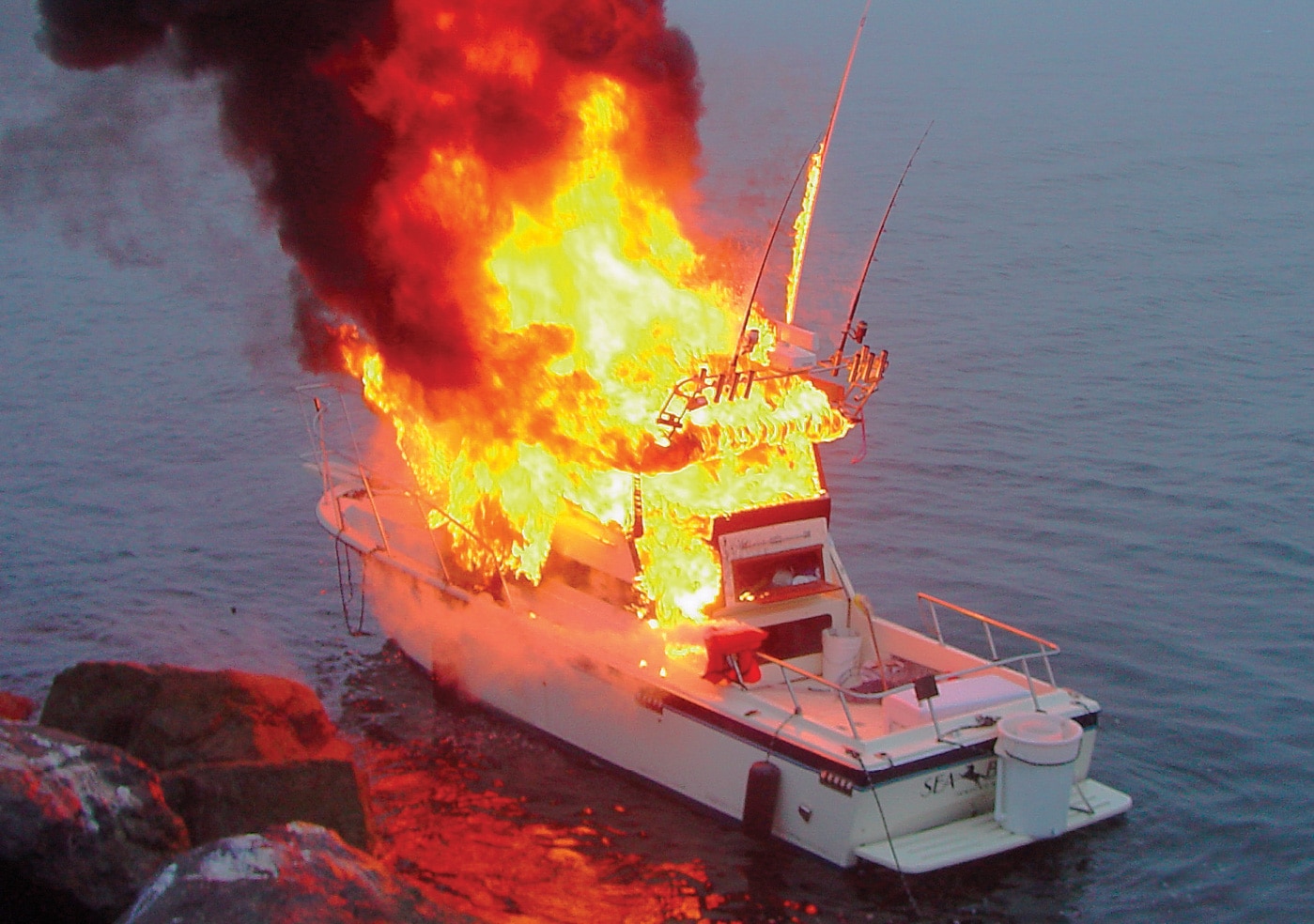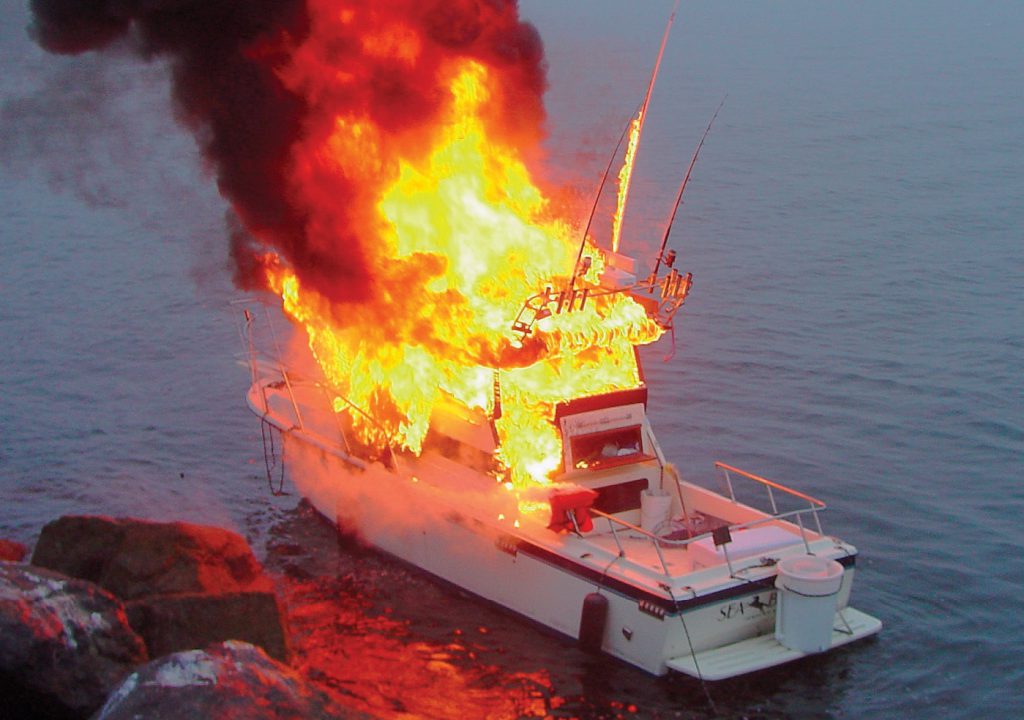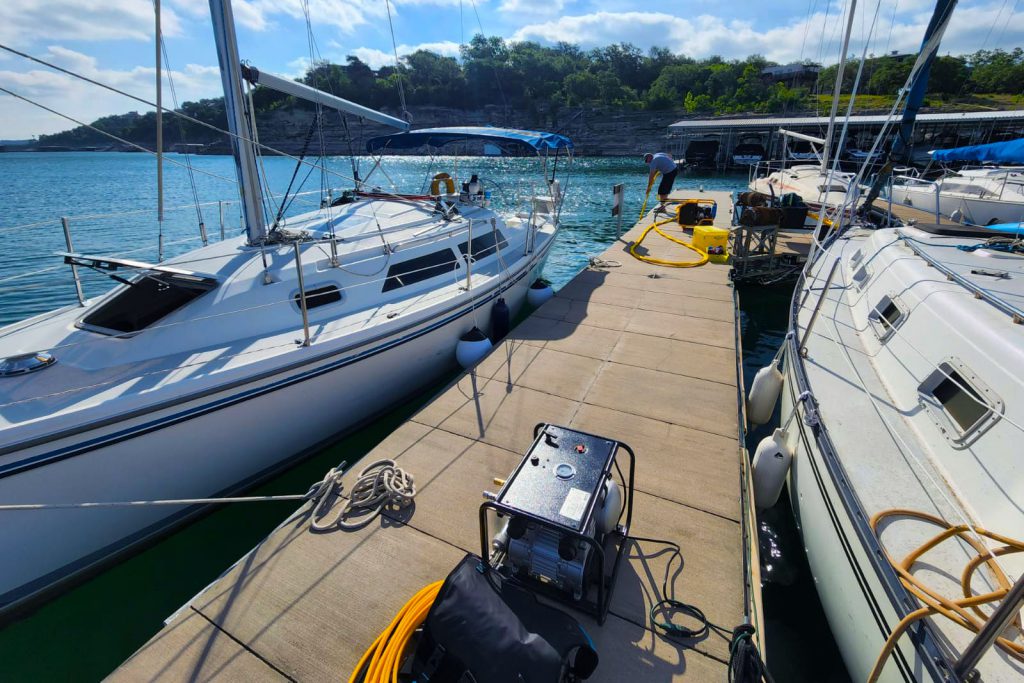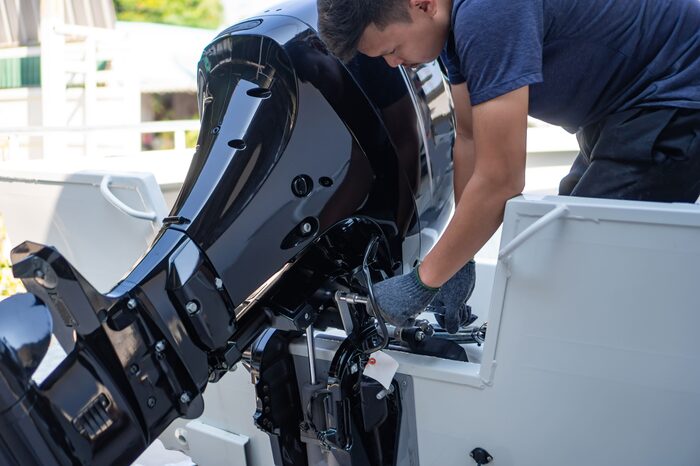Wired Right: Amps, Electricity, and Safety Onboard
June 6th, 2025 by team

by B.J. Porter (Contributing Editor)
Read Part I Part II and Part III
For our next installation on electricity basics, we’re going to discuss keeping you and your boat’s electrical system safe.
We live with electricity every single day on land, and we think nothing of turning on a light switch, running a microwave, or plugging in a hair dryer. And most times we don’t give a thought to safety. Most of us learn pretty young that we shouldn’t use the hair dryer in the tub, or stick a fork in a toaster or electrical socket. If something stops working or we need to change our house wiring, we call a skilled and licensed electrician.
But what about electricity on a boat? What’s different?
The biggest differences are the types of electricity, the environment it’s in, and most importantly, that the boat owner is often the one troubleshooting, maintaining, or even installing the electrical devices. What could go wrong?
What are the risks of electricity on board?

The two major risks of electricity on board are electrocution and fire. There’s also a risk of boat damage from galvanic corrosion, but that’s a longer, more complex topic where the risks are usually not immediately life threatening and is outside the scope of this article. Yes, hidden galvanic corrosion can sink your boat, but it’s not something that happens quickly.
So how can electricity hurt you or start a fire? There are several answers and we’ll discuss how to avoid them and minimize the risks.
Electrical Fire – Cause and Prevention
Electricity is an excellent source of power for heat. We use it in space heaters, stoves, and even to make light by overheating a wire. But how electricity makes heat also relates directly to how fires start accidentally with it.

Overcurrent and Resistance
Resistance is the restriction of the flow of electricity. Doing “work” with electricity causes resistance, but resistance is also inherent in the material conducting electricity. And smaller wires have higher resistance to big electrical loads.
Consider an incandescent bulb. It makes light, but it also makes a lot of heat. A large amount of electricity passes through a small wire filament, a very effective resistor against large currents. When current passes through a resistor loads, it can heat. Overloaded resistors get so hot that they glow. A lightbulb makes light (and heat) by overloading a resistor. So does a space heater, but it’s focused on heat, not light.
The same thing can happen in a badly designed or damaged electrical installation. If you accidentally route too much power through a lot of resistance, you can generate enough heat to start a fire in nearby flammable materials.
How can that happen? A lot of ways, though usually it’s using inadequate fusing or poor installation. The wrong size fuse doesn’t protect wires, or undersized wires from an improperly designed system. Another way is damage to the electrical system. A boat is a hostile place for electrical wiring, and corrosion can cause excess resistance and wire heating. Short circuits (usually from damage and corrosion…) can also lead to overheating and fires.
Preventing Fires
There are two primary ways to prevent electrical fires – good overcurrent protection, and proper installation techniques. In addition, routine inspection of wiring and components can identify corrosion and failure points before catastrophic failure.
Proper wire sizing is required whenever an electrical device is added or changed. There are tables provided by the ABYC and in several books on boat maintenance to help you calculate the correct wire size for minimal voltage drop. You need to know the amperage draw on the circuit, and the total length of wiring in the circuit.
Choosing the correct type of wire is also important, since wires often run through warm and busy places like engine rooms. You don’t want to melt the insulation off a wire and expose the core, or take any chance that the wire might fail. So corrosion resistant tinned wire with insulation appropriate for the environment is a must.
Proper placement of the correct fuses or breakers, in addition to wire sizing, ensures that excessive current cuts the circuit before a fire starts. You can find the fuse rating for many electrical devices in their documentation or on a sticker; if not, you can determine it from the power requirements.
It’s very tempting when a fuse blows repeatedly to replace it with a bigger fuse. But the fuse blowing is a symptom of a bigger problem, not the problem itself. The right thing to do is figure out why the fuse is blowing and fix that problem then replace with the proper fuse!
Electrical fire protection tips:
- Always use properly sized wires and overcurrent protection when installing devices.
- Used tinned wire to prevent corrosion.
- Always heat shrink electrical connections to prevent water entry and corrosion.
- Learn to make good electrical connections with a proper crimping tool and heat shrink connectors. Tug them gently to make sure they’re good before you heat shrink!
- Never replace a blown fuse or breaker with a larger one. (Unless it’s a temporary measure to get you to a safe port, then replace it properly as soon as you’re in!)
- Routinely check electrical connections, battery terminals, and fixtures for corrosion and buildup and promptly clean, replace and repair as needed.
Electrocution Risks
Getting a shock from a 12 volt or 24 volt DC boat battery is unpleasant, and can be painful and surprising. Even if the shock is harmless, the reaction to it can cause you to bump your head, cut yourself on something sharp nearby, or hurt yourself in some other way. But it’s rarely fatal.
Shore power and AC current from an inverter is much more likely to cause serious harm or death. It’s at least as deadly as an electrical outlet in your house, and you must treat it accordingly.
Electrocution can cause burns, paralysis, or cardiac arrest. The causes of electrocution are the same whether it’s AC or DC power, but the effects of the electrocution can vary.

What causes electrocution?
Electrical power must flow through a closed circuit. You can easily complete a circuit by passing wires from a battery to a light bulb, but some items resist electricity quite well and electricity does not flow through them.
Materials which carry electricity well are called conductors, and include most metals. Things which do not conduct electricity well are insulators. Examples of insulators include wood, plastic, and rubber. But many materials fall somewhere along the line between very conductive and insulating. Salt water, for example, conducts electricity, but not as well as a piece of copper. And fresh water doesn’t conduct nearly as well as salt.
Electricity always flows through the path of least resistance. And sometimes, through accident or poor planning, that path is a human body.
Like salt water, the human body can conduct electricity. It’s not an excellent conductor, but it works well enough that an accidentally completed circuit with the human body can cause current to flow, and that is electrocution.
But it’s not as simple as that. For example, dry skin is not a good conductor of electricity compared to wet skin. So a wet person standing in a puddle of salty water will provide a much more attractive path for electricity than a person standing on a dry deck wearing a pair of rubber boots. So it increases the electrocution risk if you’re working in a wet area on problem wiring.
And you don’t have to touch both “sides” of a wire to cause electricity, because electricity will follow a path to a “ground” even if it’s not the other end of the power source. And it’s this – accidentally touching an electrical source while offering a good path to ground – that leads to dangerous electrocution.
So what causes electrocution? Completing a circuit to ground that includes part of your body.
Avoiding Electrocution
Any time you’re working around electricity, watch what you touch. Putting your hands directly on any live wire puts you at risk for for a shock. A few basic precautions before you work on a power system can save you some serious injury. These apply to AC or DC power, though some are just AC.
- Always turn power off before you work on it. Use the main breaker or battery breaker.
- Remove all metal jewelry and things which dangle.
- Disconnect shore power and ensure all inverters are off.
- Use tools with insulated handles if you can. You can temporarily insulate metal tool handles with electrical tape.
- Consider electrician gloves while working on your boat. You don’t need high end electrician’s gloves for boat voltages.
- Do not do electrical work in wet areas. If you must, take precautions to stay dry and out of the water and any grounding.
- Check wires for voltage with a multimeter before touching.
- Avoid touching damaged or corroded wiring unless you know it’s off and you have gloves.
Work Safe and Smart
The first rule of safe electrical work on your boat is to know when you need help.
Most people will not do much harm fixing a simple 12v LED light fixture installation. But when you work with shore power or very high currents, make sure you get help if you aren’t confident in your ability. You can do most of your own work, but a dangerous installation will quickly offset cost savings if something goes wrong.
Plan your projects carefully, use the right tools, and don’t put yourself into risky situations. There are plenty of excellent resources on electrical basics for simple projects, so do your homework!
- Posted in Blog, Boat Care, Boating Tips, Cruising, Fishing, iNavX, iNavX: How To, Interviews, Navigation, News, Reviews, Sailing, Sailing Tips
- No Comments
- Tags: electrical, electrocution, wiring


Leave a Reply